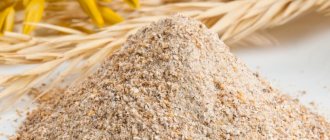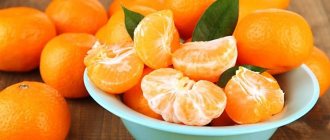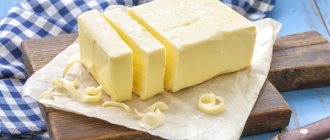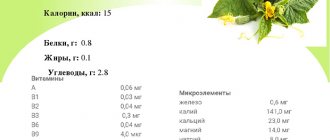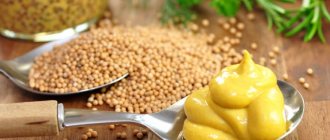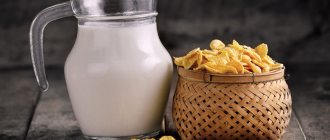How many calories do pistachios contain?
The calorie content of pistachios is 560 kcal per 100 grams . In order to benefit from consuming these nuts without losing weight, you should eat no more than 50 pieces per day, weighing 30 grams. Of course, we are not talking about salted pistachios for beer, but about a product without adding any seasonings.
If you suffer from excess weight, then the daily requirement will be much less; to understand this issue, you can contact a nutritionist.
Calorie content and composition of pistachios
The beneficial properties of the fruits are explained by their unique composition. Nuts contain proteins, carbohydrates, fats, dietary fiber, starch, and ash. It is proteins, fats and starch that make up the majority of the product, which determines its high calorie content - 556 kcal/100 g. But if you eat fruits in recommended doses, then you don’t have to worry about your figure - a huge amount of amino acids acts as a fat breaker, which helps in the absorption of the product by the body.
Vitamin composition:
- PP;
- B1, B1, B5, B6, B9;
- E;
- H (biotin);
- Choline.
One serving of nuts saturates the body with the daily norm of all vitamins, but 100 grams of micro-, macroelements and compounds. There is even more product than a person needs per day:
- Calcium;
- Magnesium;
- Sodium;
- Potassium;
- Phosphorus;
- Chlorine;
- Sulfur;
- Iron;
- Zinc;
- Iodine;
- Copper;
- Manganese;
- Selenium;
- Molybdenum.
This is not a complete list of useful substances. Nuts contain essential: boron, vanadium, strontium, tin - and all this in the necessary compounds to facilitate absorption by the human body. The rich, unique composition and the need for a small portion per day to maintain health make the nut a mandatory component of the menu of any self-respecting man.
Pumpkin seeds for prostatitis: properties and recipes
How to lose weight with pistachios
Nutritionists recommend not to forget about these nuts during your diet, since despite their calorie content, they can have a positive effect even on your figure. Thanks to their use, you will feel full for a long time, and you will not want to make unnecessary and unnecessary snacks. During strict diets, the body is exposed to stress and performance can significantly decrease. Since pistachios are complex carbohydrates, they help a person feel a surge of strength and energy for as long as possible.
Of course, there is no pistachio mono-diet, because in this way it will be difficult to lose excess weight, however, by consuming several pieces of these nuts a day, you will enrich your body with vitamins, and will also be able to last longer on a diet menu, which can sometimes be very meager and monotonous. In any case, before changing your usual diet, it is better to consult a nutritionist who will help you create the right menu.
Pistachios for weight loss
Nutritionists of the old Soviet school recommend eliminating all nuts when losing weight. The reason is its high energy value.
But the American Dietetic Association does not recommend reducing the amount of fat in the diet to less than 1 g per kilogram of body weight, so as not to slow down metabolism and harm the hormonal system.
With a balanced diet, you can include pistachios in the menu. Strict control will help avoid harm.
Advice! You can calculate the amount of proteins, carbohydrates and fats for weight loss in any smartphone application.
It's easy to include pistachios in your daily calorie intake. You should start with 10–20 g of nuts and, if possible, increase their amount to 30 g per day. This is much better than eating “low fat” margarine and other unhealthy foods.
What time of day is best for losing weight to eat nuts? This doesn't matter for fat burning. But it is advisable to include them in the meal that needs to be made more satisfying. Those who suffer from hunger after dinner can sprinkle nuts on their salad. If you can't get enough of your morning oatmeal, throw a handful of chopped nuts into your porridge.
What do pistachios contain?
As we mentioned above, the calorie content of 100 grams of pistachios is 560 kcal. They also contain 20.2 g of protein, 45.3 g of fat, 16.6 g of carbohydrates, 10.6 g of dietary fiber, 4.37 g of water. Among the vitamins and elements:
- beta-carotene (0.305 mg);
- vitamin A (26 mg);
- vitamin B1 (0.87 mg);
- vitamin B2 (0.16 mg);
- vitamin B3 (1.3 mg);
- vitamin B4 (90 mg);
- vitamin B5 (0.52 mg);
- vitamin B6 (1.7 mg);
- vitamin B9 (51 mg);
- vitamin C (5.6 mg);
- vitamin E (2.86 mg);
- vitamin H (10 mg);
- vitamin K (3 mg);
- potassium (1025 mg);
- calcium (105 mg);
- silicon (50 mg);
- magnesium (121 mg);
- phosphorus (490 mg);
- chlorine (30 mg);
- iron (3.92 mg);
- iodine (10 mg);
- copper (1300 mg);
- chromium (6.9 mg);
- zinc (2.2 mg).
Pistachios nutritional value
This light-loving plant from tropical and subtropical regions belongs to the category of evergreens. The fruits of the pistachio tree have been successfully used as food for more than 2000 years. They have found their application in cosmetology and medicine. In the article we will look at the beneficial properties of pistachios, their nutritional value and other features.Nuts are eaten as part of desserts, as an independent dish, or added to salads, appetizers, and hot dishes, mainly in crushed form.
Nutritional value (BJU) of pistachios:
Substance
| Compound | Units | ||
| In a shell | Without shell | ||
| Squirrels | 10 — 11 | 21 | G |
| Fats | 24 — 25 | 52 — 54 | G |
| Carbohydrates (total) | 6 — 8 | 12 — 13 | G |
| Energy value | 270 — 280 | 560 – 620* | Kcal |
*The calorie content of pistachios depends on the variety, storage and preparation method. Raw nuts have minimal energy value. Fried fruits contain more fat, so their calorie content is maximum.
Pistachios contain vitamins and minerals. In terms of calcium content, they are the leaders among nuts. They can also compete with other species in terms of potassium content. But the vitamin composition of the fruit is inferior to walnuts and almonds. You can see the composition of nuts by the amount of minerals and vitamins in the photo below.
Pistachios contain a small amount
"fast" carbohydrates
. That's why
glycemic index
(GI) of nuts is small, only 15 units. This level allows the fruits to be used by people with impaired glucose tolerance and diabetes. When counting calories, you need to take into account the GI. If you reduce the energy value by replacing pistachios with chestnuts, the calorie content will decrease and the GI will increase. Compare the GI level and energy value of nuts and seeds in the photo below.
If you regularly eat pistachios, their benefits will lie in the effects of the biologically active substances contained in the nuts. Despite their more modest composition compared to walnuts and hazelnuts, they have a beneficial effect on the body of both an athlete and an ordinary person.
Useful properties of pistachios:
- Tocopherol (E). It has antioxidant properties and rejuvenates not only the skin, but also the body at the cellular level. Its beneficial effects can be seen in improving the structure of nails and hair, and lowering blood pressure.
- Folic acid (B9). Normalizes the functioning of the digestive tract, prevents developmental disorders (especially during early pregnancy), increases the capabilities of the immune and hematopoietic systems.
- Pyridoxine (B6). It is especially useful for athletes with high intellectual stress (chess, orienteering). Leads to normalization of metabolic processes in brain tissue. Affects the functioning of the heart and blood vessels.
- Pantothenic acid (B5). Affects the athlete's weight. This vitamin is especially useful in weight-dependent sports (boxing, gymnastics, figure skating, horse riding).
- Riboflavin (B2) . Improves the structure of the skin and connective tissue. Particularly useful during the recovery period after injuries.
- Thiamine (B1). Regulates cellular processes. Increases the resistance of cell membranes to damage. Normalizes the conduction of nerve impulses.
- Nicotinic acid (PP). Improves the structure of the skin, normalizes digestion. Stabilizes the athlete’s emotional background and improves sleep quality.
The mineral composition also determines the beneficial properties of nuts. Calcium-rich fruits increase muscle strength and improve bone structure. This strengthens the skeleton and increases muscle endurance, including the myocardium. And potassium in fruits normalizes heart rate.
Most often, pistachios are used as an independent dish. Nuts have proven themselves to be a healthy snack in the morning. The high caloric content of fruits does not allow them to be actively consumed in the evening. Their daily requirement for an adult is 10-15 nuts.
Raw or naturally dried nuts without additional components (salt, chocolate, etc.) are suitable for a healthy diet. Fruits without added sugar can be considered a successful combination with pistachios. Steamed apples, pears, plums, berries go well with nuts even in dried form (marshmallow).
The effectiveness of nuts for men and women differs from the benefits they bring to children. Eating pistachios by young athletes is beneficial for proper development. A daily norm of 5-7 nuts is enough to obtain about a quarter of the daily norm of vitamins and minerals included in the fruit.
To reduce allergic reactions, it is recommended to introduce pistachios into children's diets from 3 years of age. The fruits are rich in vitamins and are especially useful during intensive growth and tissue development, that is, in childhood and adolescence.
Pistachios are a calorie bomb, loaded with vitamins and microelements. Their effect on the male body is distinguished by effects associated with a positive effect on the reproductive system.
They appear:
- increased potency;
- increased libido;
- improving sperm quality.
The substances contained in the fruits are especially relevant for women. They immediately affect several areas of healing the body:
- Significantly improves skin structure. Pistachio oil is one of the most effective in cosmetology. It is added to creams, masks, lotions, compresses, etc. The result of regular use of oil is a significant rejuvenating effect, strengthening hair and nails.
- During pregnancy, pistachios gently cleanse the intestines, saturate the blood with substances necessary for the baby, promoting its proper development.
- The high content of biologically active substances and minerals softens the menopause period.
After childbirth, nuts stimulate milk production by the mother's body. They don't just increase fluid volume. Nuts improve the properties of milk: increasing fat content, saturation with biologically active substances and minerals.
It is especially important for a child to get a high amount of calcium into his body. In this case, the mother’s body is not depleted of this metal.
Pistachios are rich in vitamins and minerals. But even when using them, there are adverse reactions. Possible harm from eating pistachios:
- individual intolerance;
- weight gain due to overeating;
- indigestion (due to overeating).
The greatest harm can be caused not by the pistachio nuts themselves, but by their improper use. For example, they are eaten in shortbread or cakes. In this case, the calorie content of pistachios increases many times over. On the Internet you can find various recipes for dishes with pistachios, in which they are mixed with an oil base. It is best not to include them in your diet when eating healthy. Preference should be given to raw nuts mixed with fruit.
To increase the shelf life of nuts, they are soaked in a salty solution and then dried. The result is fruits with a high NaCl content. Eating them leads to water retention in the body, edema, increased kidney function and weight gain. With uncontrolled use of such nuts, metabolic disorders occur. If only salted fruits are available for food, then they need to be soaked before eating. After this, rinse with water and dry.
Contraindications to the use of pistachios:
- individual intolerance;
- obesity (in this case they need to be combined with low-calorie foods and reduce daily consumption);
- kidney disease (for salted nuts);
- increased blood pressure (for salted pistachios).
Pistachios can harm an athlete’s body if the nuts are chosen incorrectly.
Preference should be given to:
- nuts with opened shells - they are fully ripe and have the properties listed earlier;
- pistachios with a green kernel - the richer the color of the nuts, the more pleasant the taste;
- no signs of mold, moisture or other storage problems;
- without salt: this sign can not only be seen in transparent packaging - it must be checked by the composition of the product on the label.
Pistachios are very sensitive to temperature, humidity, and sunlight. They need to be protected from sunlight. Glass containers with a tight lid are ideal for storing nuts. Temperature conditions most significantly change the shelf life of nuts:
- at room temperature, nuts retain a pleasant taste for about 3-4* weeks;
- in the refrigerator this period increases to 3-6* months;
- When pistachios are kept in the freezer, they retain their properties for up to 6-12* months.
*The wide variation in shelf life is caused by the different initial state of the nuts.
Note! Salted pistachios store best at room temperature, but spoil faster in the refrigerator or freezer. Pistachios in the shell go rancid more slowly. Their core remains intact. Access of oxygen to its fatty acids is limited.
Pistachios are healthy and tasty nuts. They contain a lot of biologically active substances and minerals, so they are suitable for people of different genders and ages. They are slightly inferior in composition to walnuts and hazelnuts, but are an excellent substitute for cashews or Brazil nuts. The daily intake for adults is 15 nuts, for children 5-7.
You need to buy unsalted nuts and store them in a glass jar with a tight lid in the refrigerator.
The calorie content of pistachios is quite high, so excessive consumption of the product is fraught with excess weight. But if you regularly eat 30 grams. seeds, you can lose weight and prevent many diseases.
Pistachios are a fairly high-calorie and very valuable product. They can be eaten as a snack or as an addition to a meal. The energy and nutritional value of pistachios is determined by their chemical composition, which includes:
- proteins;
- fats;
- carbohydrates;
- plant amino acids;
- alimentary fiber;
- glycerides;
- vitamins and minerals.
Bju ratio per 100 grams. The product can be represented by the following table:
| Calories | 560 kcal | 569 kcal | 572 kcal |
| Squirrels | 20.2 g | 21.1 g | 21.1 g |
| Fats | 45.3 g | 45.8 g | 45.8 g |
| Carbohydrates | 16.6 g | 17.3 g | 18.0 g |
| Alimentary fiber | 10.6 g | 10.3 g | 10.3 g |
The energy value of the product depends on the method of preparation. Raw nuts contain 560 kcal per 100 g, fried nuts - 572 kcal. The calorie content of salted pistachios is 569 kcal. A handful of seeds can quickly satisfy hunger and saturate the body with essential vitamins, macro- and microelements. Compared to other nuts, pistachios are the lowest in calories.
Pistachios are rich in fatty acids (FA), but their composition is based on unsaturated fats. The product contains a large amount of oleic FA, which restores the protective functions of the epidermis and prevents skin dehydration. Nuts are also rich in linoleic fatty acid, which retains moisture and protects against the negative effects of external factors.
The product is recommended for use by athletes and those who follow a healthy and proper diet. Despite their high calorie content, pistachios are suitable for people losing weight. The exception is salted and fried products.
Nuts are good to eat with berries and fresh fruits. Pistachios contain fiber, which helps fight cholesterol, maintain normal blood glucose levels and reduce the risk of developing cancer.
Reference!
The high calorie content in 100 grams of pistachios indicates that the product should be consumed in moderation. You shouldn’t give them up completely, because nuts are very beneficial for the body.
Compared to other nuts, the calorie content of pistachios is one of the lowest. But they contain the largest amount of amino acids, polyunsaturated fats, vitamins and minerals.
The nutritional value of the product is determined by what vitamins pistachios contain. The most diverse and rich list is represented by group B nutrients, namely:
- B1 (thiamine) - participates in the body’s most important metabolic processes (fat, protein and water-salt). Normalizes the functioning of the cardiovascular, nervous and digestive systems. Stimulates brain activity. Affects blood circulation.
- B2 (riboflavin) - strengthens mucous membranes, builds resistance to infections. Promotes better absorption of nutrients, helps obtain energy from fats and carbohydrates.
- B3 (nicotinic acid, PP) - reduces the level of “bad” cholesterol, increases joint mobility, moisturizes and protects the skin from premature aging. Participates in the breakdown of food, activates cellular respiration, restores hormonal levels.
- B4 (choline) - protects cells from damage, improves memory and concentration, normalizes the functioning of the heart, gall bladder and pancreas.
- B5 (pantothenic acid) - promotes the proper flow of oxidative processes, the formation of hemoglobin, a number of hormones and fats. Helps in the absorption of other vitamins, reduces cholesterol levels.
- B6 (pyridoxine) - normalizes the activity of the immune and nervous systems, prevents the development of anemia, improves digestion processes. Increases potency and male strength.
- B7 (biotin) - participates in the synthesis of fatty acids, optimizes the functioning of the nervous system.
- B9 (folic acid) - cleanses the liver, is useful for the intrauterine development of the fetus.
Portion 90 g. pistachios contain the daily value of B1 and B3, as well as 25% of the daily value of B7, B6 and B5.
Pistachios also contain vitamin E (tocopherol), which, being an antioxidant, preserves youthful skin and muscle fibers. Supports proper heart function, normalizes blood pressure, blood clotting, reduces sugar levels and the risk of developing diabetes.
The beneficial properties of pistachio nuts are due to the following mineral complex:
- Calcium - affects blood clotting and the permeability of cell membranes, blocks the absorption of saturated fats in the gastrointestinal tract.
- Chlorine - ensures normal water-salt metabolism, eliminates swelling, participates in the formation of hydrochloric acid, supports liver function.
- Potassium - regulates fluid balance, delays salt deposition, participates in protein synthesis, metabolism of carbohydrates and proteins, improves intestinal motility.
- Sulfur - participates in metabolic and regeneration processes, improves blood clotting, maintains oxygen balance and blood sugar levels.
- Sodium - activates enzymes of the salivary and pancreas, participates in the production of gastric juice, normalizes the activity of the nervous and muscular systems, and has a vasodilating property.
- Magnesium - coordinates heart rate, reduces high blood pressure, regulates blood sugar, strengthens tooth enamel, prevents salt deposits in the kidneys and gall bladder.
- Phosphorus - ensures normal growth of dental and bone tissue, maintains acid-base balance in the body.
- Aluminum - restores damaged cells, supports the functioning of the thyroid gland, forms the tissues of the musculoskeletal system and skin.
- Zinc - improves reproductive function, activates various cellular processes, improves mood.
- Manganese - affects the formation and growth of bone tissue, strengthens the immune system, stabilizes the digestive process, and normalizes the functioning of the nervous system.
- Iron - participates in the processes of hematopoiesis, redox reactions, forms and supports the functioning of the immune system.
Reference!
Due to the optimal ratio of energy and nutritional value, pistachios can be included in a therapeutic diet.
Despite their high calorie content, pistachios have a low glycemic index, which means they do not increase insulin concentrations in the blood and prevent excess calories from being converted into fat.
Scientific research has shown that if you replace the 500 calories you get from saturated fats with a high glycemic index with the 500 calories you get from pistachios, you can maintain a healthy weight.
Interesting fact!
In ancient Persia, pistachios symbolized wealth and served as a bargaining chip.
Tweet
What are the benefits of pistachios?
- They reduce blood cholesterol levels and also have a positive effect on heart function, strengthening the heart muscle.
- Helps control weight by quickly feeling full. They are recommended to replace sweets, chips and other unhealthy foods.
- Thanks to their composition, they help improve vision and also reduce the risk of developing cancer.
- They are of great benefit to diabetics, preventing the risk of heart disease and cardiovascular problems.
- They have an anti-inflammatory effect.
- Increases hemoglobin levels and fights anemia.
- They normalize the functioning of the nervous system, preventing possible depression and sleep problems.
- They have a beneficial effect on the immune system, helping to improve it.
- Helps with brain function and improves memory.
- Recommended for use by athletes to restore strength and maintain a normal mental state.
- They have a positive effect on the musculoskeletal system of the fetus during pregnancy.
- Help women cope with unpleasant pain during PMS and directly during menstruation.
- Benefits the skin by smoothing, nourishing and moisturizing it.
- They help smooth out fine wrinkles and also relieve skin from flaking, especially in the cold season.
- Promotes strengthening, growth and elasticity of hair.
- Improves erectile and reproductive function.
Interesting Facts
Scientists discovered the first mentions of the consumption and benefits of pistachio nuts in the ancient chronicles of the East and Turkey dating back to the beginning of the 10th century. There is a parable that Adam, leaving the Garden of Eden, took a handful of pistachios with him on the journey, which satisfied his hunger and gave him strength on the difficult journey. This story, most likely, became the reason for all travelers and sailors to take pistachios with them on sea voyages as a high-energy product. The beneficial elements and vitamins in these nuts restore strength well, strengthen reproductive functions in men, satisfy hunger, and even fight a number of sea diseases characteristic of long-distance voyages. This is how pistachios ended up off the coast of Europe, beginning to rapidly conquer the national cuisines of this continent.
In the East, pistachios are called “smiling nuts.” In eastern families they symbolize prosperity and well-being. In Syria, most dishes on tables during wedding celebrations are still decorated with nuts. It is believed that for men this fruit is the best product for strengthening potency.
Today, about twelve varieties of this nut are on sale in European markets. Seven of them are brought to us from Iran. The tree is grown in this country with special love, and export is treated very responsibly - the nut kernels are carefully selected. Pistachios, the benefits of which are assessed by the thickness of the shell, are put up for sale only with very thin shells, at least 2 cm long, and weighing 1 gram or more.
Are there any harm from pistachios?
You already know that pistachios are a storehouse of vitamins and have a very good effect on your health, but there are also some negative aspects.
- Nuts are a strong allergen and pistachios are no exception, so allergy sufferers and children should be careful (this product should not be given to children under 3 years old).
- There is a possibility of increased blood pressure.
- They are very high in calories, so if you consume them in large quantities, you can gain weight.
- May cause bloating, diarrhea or constipation.
- By consuming pistachios in the last months of pregnancy, a woman runs the risk of giving birth prematurely, as this product can trigger uterine contractions.
Pistachio oil: beneficial properties and applications
Pistachio oil is a source of healthy fats, vitamins E and B.
It is used:
- in cooking - for dressing salads and cold cereals,
- in cosmetology – for hair and skin care.
For hair
The oil prevents hair loss.
To strengthen, make oil masks. Apply to the scalp for 40 minutes and wrap with a towel. Then wash off with regular shampoo. Apply 1-2 times a week.
The oil does not harm oily skin, dissolves traffic jams and fights dandruff.
For skin and nails
Pistachio oil is used as an evening care product and a base for masks.
- You can lubricate the décolleté area and facial skin with oil at night for 20–30 minutes and then wipe it off with napkins.
- Use pistachio oil to remove cuticles. It is applied to the nail holes for 10–12 minutes before manicure.
Is it possible to grow a pistachio yourself (video)
Good and high-quality pistachios are very difficult to find on store shelves; you can simply grow them yourself. Watch this video and you might soon be enjoying your own nuts.
Find out also what the calorie content of hazelnuts is and in what quantity you can consume it. You may be interested to know about the calorie content of pumpkin seeds and whether they can replace everyone’s favorite sunflower seeds.
Read about the calorie content of cashews and how they are used in diets. It will be useful for those who monitor their nutrition to learn about the properties of lentils and their calorie content. Learn how to cook oatmeal so that its calorie content is minimal.
Dear readers, did you know how many calories are in 100 grams of pistachio nuts? How often do you use this product and in what form? By what parameters do you choose quality pistachios? Have you ever tried to grow these nuts yourself?
Author of the publication
Cellulose
Considering the beneficial properties and contraindications of pistachios for the body, it is worth focusing specifically on the fiber they contain. There is more of it than in any other nuts. For example, 30g of unsalted pistachios contains the same amount of fiber as a large serving of oatmeal.
These fruits are an excellent remedy that can support the body during the period of rehabilitation after illness or during times of stress. It is recommended for both children and adults to eat these nuts. Especially for minor children, whose bodies are actively growing, requiring large amounts of nutrients and calories.
Due to the rich composition of these fruits, they are often consumed by people who regularly experience significant physical activity, as well as athletes. It is believed that pistachios have a beneficial effect on increasing concentration time when engaging in mental work.
Pistachios in cooking
In modern cooking, nuts are used to give dishes an exquisite, unique taste. Roasted fruits with lemon juice go well with champagne and dessert white wine.
In the confectionery industry, nuts are added in the production of pastries, cakes, candies, ice cream, and are also used for preparing salads, meat dishes, soups, puddings, etc.
Salad with chicken and pistachios
The recipe is original due to the combination of pistachio flavor with fresh cucumber and cheese.
Ingredients for salad with chicken and pistachios: • 1 chicken breast; • 3 eggs, • 2 tomatoes, • 1 large cucumber; • 100 grams of hard cheese, • a bag of mayonnaise, • a bag of ready-made salted pistachios.
Method of preparation: The salad is “layered”, so each layer must be coated with mayonnaise.
- Place finely chopped chicken breast on the bottom of the salad bowl. You can cook it or take it ready-smoked.
- Cut the cucumber into small cubes and place in a second layer.
- Then you need to peel the pistachios and chop them into pieces. Sprinkle half of the resulting mixture onto the cucumber layer. We don’t apply mayonnaise yet.
- Finely chop the hard-boiled eggs and place on the nuts.
- It is better to take fleshy tomatoes, from which you need to remove the seeds and then finely chop them. Place them on the eggs and sprinkle with grated cheese.
- Coat the last layer of salad with mayonnaise and sprinkle with remaining pistachios.
- Place the finished salad in the refrigerator for an hour to soak.
Salad with grapes and pistachios
This recipe has many variations, because you can add ingredients according to your preferences. For example, replace celery with parsley or sprinkle the dish with grated cheese, etc.
Ingredients for salad with grapes and pistachios: • 200 grams of seedless grapes; • 1/2 part of curly cabbage (or Chinese cabbage); • 1/4 part red cabbage; • 1 sweet pepper; • 1 stalk of celery; • 100-150 grams of pistachios; • 1/4 cup olive oil; • 1/4 cup red wine sauce; • 1 teaspoon mustard; • Salt and pepper to taste.
Preparation: Grind all ingredients, place in a salad bowl and mix well.
Fish with pistachios
Preparing a dish according to this recipe is simple and affordable, because absolutely any fish can be used in the form of a whole carcass or fillet.
Ingredients for fish with pistachios: • 2 fish carcasses or fillets; • 20 grams of peeled pistachios; • 1 medium lemon; • 1 tablespoon of vegetable oil; • ground black pepper; • red hot pepper; • salt to taste.
Preparation:
- Fish or fish fillets must be washed. Then you should salt it, pepper it and dip it a little in vegetable oil.
- Remove the zest from the lemon, chop it finely and sprinkle the resulting mixture onto the fish. Remove a tablespoon of juice from the pulp and pour it over the fish.
- Grind the pistachios in a mortar and dip the fish in them (so that they stick to it).
- Grease a baking dish with oil, place fish carcasses in it and bake at a temperature of 180-200 degrees for 20 minutes.
Energy breakfast
Traditional medicine believes that for breakfast you need to “combine into one dish” pistachios (to relieve fatigue), raisins (to strengthen the nervous system and heart), and dried apricots (for vigor).
Consumption standards
Everything has a reasonable consumption limit. The same applies to pistachios. If you abuse them, you may experience:
- allergies. Manifested by the appearance of a rash, itching, or even the onset of anaphylactic shock;
- overweight. Although this nut is positioned as an excellent addition to the diet of a person who is in a calorie deficit, its uncontrolled consumption can cause extra pounds or lack of weight loss results;
- poisoning If the storage conditions of this nut are violated, mold fungi will form on it. Their appearance is accompanied by the production of a dangerous and toxic substance – aflatoxin. It leads to severe poisoning and promotes the development of tumors;
- high blood pressure. The reason for this effect is not the nuts themselves, but sodium, which salt is rich in. And it so happened that it was salted pistachios that gained great popularity;
- problems with the gastrointestinal tract. This is another consequence of excess nut consumption. Overeating can lead to bloating, pain and bowel dysfunction.
Daily intake of pistachios for adults
When answering the question of how many pistachios you can eat per day, you should take into account not only the nutritional value of the product, but also all the potential negative properties. Although this product is classified as dietary, control over its consumption is necessary.
Most experts agree on the norm of pistachios at 30 grams (this is about 10-15 nut kernels). This amount will allow you not to worry about exceeding the caloric intake of the diet, nutrients or essential oils, which can cause nausea and dizziness.
Nuts are popular as a snack for alcoholic drinks; they are eaten with strawberries or cheese. However, it is best to consume pistachios in their pure form, without salt and in moderation.
Daily intake of pistachios for children
Are they allowed and, if so, how many pistachios can a child eat per day? This question is not so simple.
There is no need to give pistachios until the age of two. From two to three years old, you should be especially careful, and after overcoming this age, you can gradually introduce the product into the baby’s diet. His enzymatic system will already be ready to digest such food.
Start giving a quarter to half a pistachio kernel. And for middle-aged children, this amount can reach 15 grams per day.
Recipes for children
In order to introduce pistachios into your child’s diet, you can use this nut in culinary dishes. It can be:
- oriental sweets (Turkish delight, baklava, sherbet, urbeche);
- ice cream with pistachio. Grind the kernels and sprinkle the sweetness with them;
- salads with herbs and cheese;
- rice with ginger and soy sauce;
- stew;
- soups;
- cutlets and meatballs;
Contraindications and harm
Pistachios have a number of contraindications for use. If consumed in excess, they can harm the body. You should not eat nuts if you have the following health problems:
- food allergies;
- asthma;
- diseases of the digestive system.
People with orthodontic appliances should avoid this product. Excessive inclusion of pistachios in food may cause allergic reactions. Eating salted nuts leads to fluid retention in the body and increases blood pressure.

